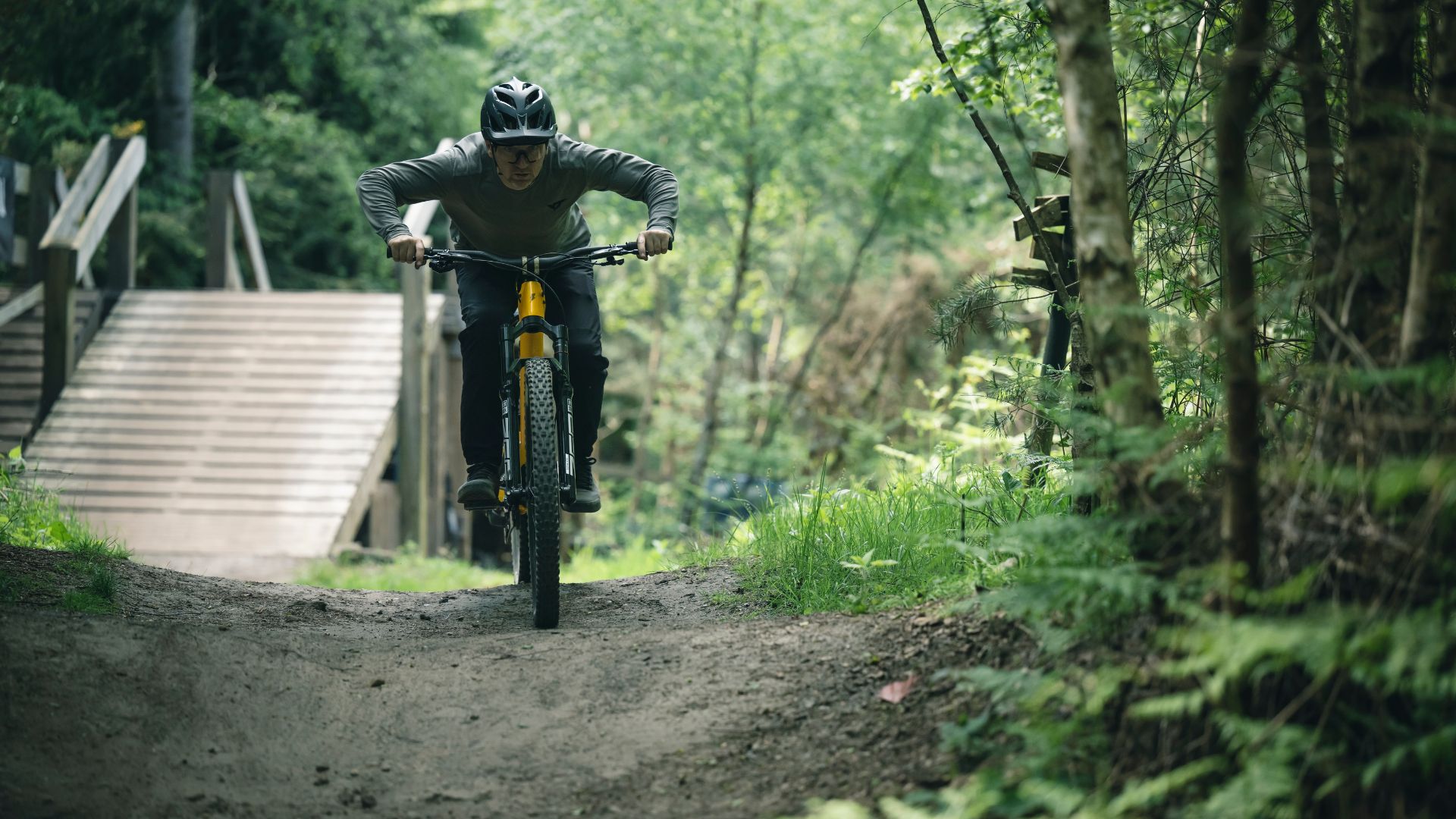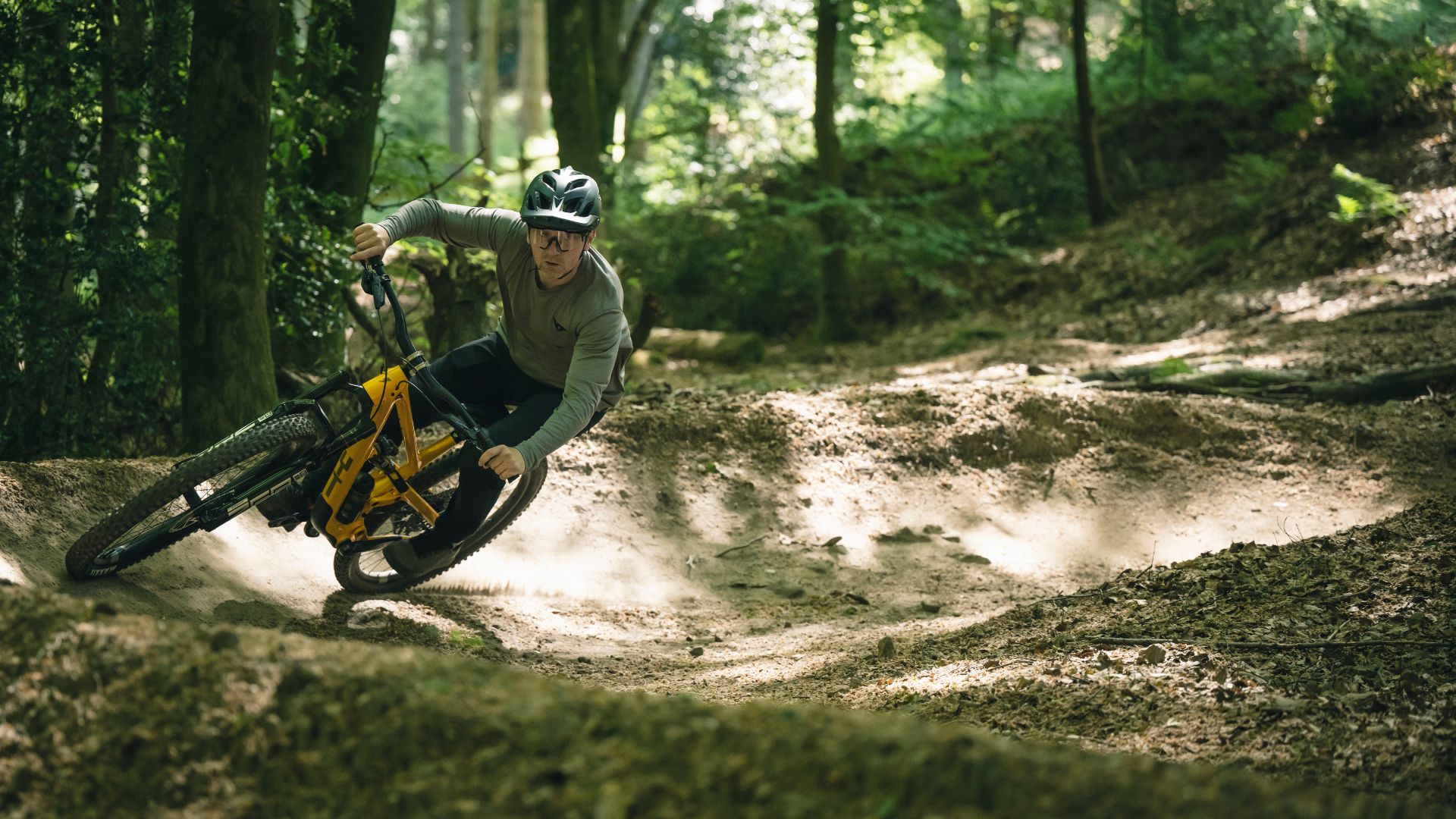Looking forward to uplifts, table tops, jumps, berms and turns galore? Make the most of your visit, perfect these skills, and elevate your ride level.
Once the preserve of downhillers, bike parks are becoming popular with riders of all levels, drawn by tracks designed to suit every level of rider and an uplift or chairlift service for as many laps as energy levels allow. To make the most of a bike park visit, we’ve got some top tips and essential skills to perfect.
Don’t go straight to the most technical track
If you’ve never been to a venue before then don’t go straight for the most difficult trails there are. Every bike park is different, and it will take a few runs to work out the size of the drops and jumps, how well supported the berms are, and how the dirt reacts under the conditions of the day.

Take some time for warm up laps before moving on to more technical tracks
You typically get a feel for the style of a venue after a few runs, but start with the easier Blue or Red trails and work your way up.
Remember you’ll also get tired as the day goes on so you might want to ride easier trails towards the end of the day so that you can actually make it out alive.
Repeat trails, session sections
As your day progresses you don’t have to ride a different trail every run. If you like how one or two of them ride then why not make better progress on them as the day goes on. You can always tidy up the rougher sections, avoid braking bumps that you now know are there now, or take wider lines on the tighter corners.
The progression that you’ll make from your first run to your last will be noticeable and you’ll leave the day with a much better feeling of satisfaction knowing that you made a solid improvement as the day went on.
Wear the right kit
You may want to suit up for a day of uplift. There will be a lot less pedalling than a regular XC or Enduro loop, so wrap up warm. After all you’re going to spend a lot of the day sitting on a bus or chairlift.

Protection is important, and a lot of bike parks mandate the wearing of full-face helmets, knee pads and gloves. In terms of protection, knee pads are a must, elbow pads are a good idea and body armout should be considered for bigger features.
Opt for a full-face helmet, goggles and full-finger gloves.
Get your bike ready
If you have the choice of bigger or more aggressive tyres then this might be the day to fit them. The extra traction and volume will allow you to get away with a lot more. Gravity-fed trails will need a grippier rear tyre so you can rely on the braking when you skid, so a faster rolling tyre with less depth to the tread will be out of it’s depth here.
Making sure your brakes are working is also a good idea. They are going to get a huge demand placed upon them over eight or ten full runs, so make sure you’ve had them bled recently and that you have plenty brake pad showing.
Flat pedals might be an option here as well in case you have to make a quick exit.
Essential bike park skills
These are the skills you should master while you’re at the bike park. Get these down, and you’ll see your level progress rapidly.

1. Keep those pedals level
As most corners will have support, think about keeping your pedals level. Level pedals will let you drive your bodyweight evenly into berms, rollers, and jumps to generate grip and stability.
2. Pumping rollers
Bike parks and trail centres are littered with smooth obstacles. Having a lower body position means that you can handle larger features and get a better drive, or pump, out of the other side. It’s a great habit to get into and will allow you to progress on to something less predictable with greater confidence and speed.
3. Long berm push
Maintaining grip and creating momentum in a berm is exactly like driving away from a jump. You are trying to keep your pressure consistent through the whole feature by pushing your body weight against it with your legs.

This pressure is almost impossible to see as a bystander, but if you’ve ever skied then you know what it feels like. Imagine a long, predictable, slow movement that feels like you have time to react and adjust.
4. Jumps
One of the best trail features to get you back into good habits has to be jumps. Riding them correctly requires you to focus on using your legs to consistently drive your weight back against the feature with a strong balanced push.

Do this correctly and you will be locked into a consistent trajectory as you are released from the top of the jump. It’s a control mechanism that allows you to not only scale up your jumping, but will allow you to carry speed in corners. Your push should not be explosive; it should be a balance against the force of the ground, whether that’s the ramp of a jump or the banked dirt of a berm.
Remember that as you scale up the feature you need to slow down your movement, or push. You’re trying to deliver the same consistent drive applied over a greater distance.
Pro tip: If you’re unsure of the speed needed for a jump, ask a good rider if they can tow you in. In fact, following a good rider, even for a short section, is a great way to improve your riding as you naturally start to mimic their movements.
Get yourself a great bike – our ultimate guide to the best mountain bikes will see you right. Or upgrade your bike for park adventures with a set of great mountain bike brakes, the best mountain bike tyres, and don’t forget a great full-face mountain bike helmet.
Additional works by Danny Milner




